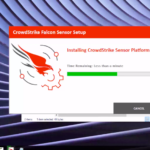Applying for student loans can seem daunting, but it doesn’t have to be. With some preparation and understanding of the process, you can secure the funding you need to pursue your educational goals. This comprehensive guide will walk you through all the steps and provide tips for a smooth student loan application.
Types of Federal Student Loans
The first step is understanding the different types of federal student loans available, as well as their terms and conditions.
Direct Subsidized Loans
These are need-based loans provided by the government. The government pays the interest on the loan while you are enrolled at least half-time and during grace and deferment periods. Eligibility is determined by your Free Application for Federal Student Aid (FAFSA).
Direct Unsubsidized Loans
These are available to all eligible students regardless of financial need. The government does not pay the interest on unsubsidized loans while you are in school or during grace and deferment periods. Interest accrues from the date the loan is disbursed.
Direct PLUS Loans
These loans are available to graduate students as well as parents of dependent undergraduate students. Eligibility is not based on financial need, but borrowers must not have an adverse credit history. The maximum loan amount is the full cost of attendance determined by the school minus any other financial aid received.
Direct Consolidation Loans
These allow you to combine multiple federal student loans into one new loan with a fixed interest rate and term. It can help simplify repayment if you have multiple loans with different lenders.
FAFSA Application
To apply for federal student loans and most other financial aid, you must complete the Free Application for Federal Student Aid (FAFSA). This application determines your eligibility for federal, state, and college aid programs.
When to Apply
The FAFSA becomes available on October 1 each year and uses tax information from the prior year. You should submit the FAFSA as early as possible, as some aid is limited and awarded on a first-come, first-served basis. Many states and colleges set priority FAFSA deadlines.
How to Apply
You can complete the FAFSA online at fafsa.gov. You will need your Social Security number, driver’s license, tax records, bank statements, and parent tax information if applicable. The form takes approximately 30-45 minutes to complete.
Be sure to follow all instructions carefully and double check for accuracy. Mistakes can delay processing. If you get stuck, there is online chat support and a toll-free number to call for assistance.
After Submitting
Once you submit your FAFSA, you will receive a Student Aid Report summarizing the information you provided. Review it for accuracy. The school(s) you listed on the FAFSA will receive your report and determine your aid eligibility.
You may need to provide additional documents to your school’s financial aid office such as tax transcripts. Respond promptly to any requests to avoid delays.
Loan Applications
In addition to the FAFSA, you will need to complete a loan application for any federal student loans you wish to borrow. Here are the steps:
Complete Entrance Counseling
All first-time federal student loan borrowers must complete entrance counseling at studentaid.gov. This interactive counseling provides important information about how loans work and your repayment responsibilities.
Sign Master Promissory Note (MPN)
The MPN is a binding legal document stating you agree to repay your student loan(s) and any accrued interest/fees. You can complete it at studentaid.gov. Some schools may have their own MPN process.
Accept Loan Amounts
Your school’s financial aid office will provide you with your student loan award offer indicating the loan amounts you are eligible for. You can choose to accept all or only part of the loan amounts offered.
Be conservative and only borrow what you absolutely need. Student loans must be repaid with interest once you leave school.
Complete Exit Counseling
When you graduate, drop below half-time enrollment, or leave school – you must complete exit counseling. This reminds you of loan terms, repayment responsibilities, and tips for avoiding default.
Repayment and Consolidation Options
Understanding repayment and consolidation options can help you manage student loan debt:
- Standard repayment plans – Fixed monthly payments for 10 years. Other extended plans up to 25 years are available at a higher total cost.
- Income-driven repayment plans – Monthly payments based on your income and family size, recalculated each year. Any remaining balance is forgiven after 20-25 years.
- Deferments and forbearance – Temporarily postpone payments under certain circumstances if approved. Interest continues to accrue.
- Loan consolidation – Combine multiple federal student loans into one new loan with a fixed rate based on the average of your loans. Allows you to make a single monthly payment.
- Student loan forgiveness programs – Get part of your loan balance forgiven in exchange for certain types of public service work after making payments for 10 years.
Thoroughly research all options so you can make the best financial decisions. Consider speaking with a financial aid counselor for guidance.
Applying for Private Student Loans
In addition to federal loans, you may want to apply for private student loans through banks, credit unions, state loan authorities, or online lenders. Keep the following in mind:
- Shop around and compare interest rates, fees, and repayment terms across multiple private lenders. Rates vary significantly.
- You will likely need a creditworthy cosigner to get approved and receive the best rates. Typically a parent or guardian.
- Apply by early summer so you have the loans approved in time for fall semester. The application process takes 1-2 weeks.
- Only borrow what you need after exhausting all federal loan options which typically have better terms and protections.
- Make payments on private student loans while in school if possible. Doing so can save thousands in interest over the life of the loan.
- Contact your lender immediately if you have trouble making payments to discuss alternative repayment plans. Avoid becoming delinquent or defaulting.
How to Apply for Student Loans – Key Takeaways
- Complete the FAFSA annually to determine aid eligibility
- Research federal loan options and their terms before accepting
- Complete entrance counseling and an MPN for federal loans
- Only borrow what you absolutely need for school costs
- Make interest payments on private loans while enrolled if possible
- Understand all repayment and consolidation options you will have
- Ask questions and talk to financial aid advisors if unsure about anything
Thorough preparation, research, and understanding of the student loan process can set you up for success. You’ve got this!
Frequently Asked Questions
How much should I borrow in student loans?
Only borrow the minimum amount you need to cover tuition, fees, books, and basic living expenses. Avoid excessive loans for housing, transportation, and lifestyle costs. Make a budget to determine how much you will reasonably need for each school year.
When do I need to start repaying student loans?
For federal student loans, repayment begins 6 months after you graduate, leave school, or drop below half-time enrollment. Private student loans may go into repayment sooner – check with your lender. Don’t miss any payments as it can lead to delinquency and collections.
Should I pay interest on student loans while in school?
If possible, yes. Paying interest as it accrues while you are in school can save thousands of dollars over the life of the loan by preventing capitalization. Any interest not paid will be added to your principal when repayment begins.
What happens if I default on student loans?
Default occurs if you fail to repay loans for 270+ days. This triggers serious consequences – your wages can be garnished, tax refunds seized, credit wrecked for 7+ years, and Social Security benefits reduced. Do everything possible to avoid default!
When should I consider student loan consolidation?
Consolidation makes sense if you have multiple federal student loans with different payment deadlines and interest rates. By combining them, you get simplified repayment with one monthly bill and can lock in an average fixed interest rate.
How to Apply for Student Loans: A Step-by-Step Guide
Applying for student loans can be intimidating, but breaking it down into simple steps makes the process much more manageable. Follow this step-by-step guide for stress-free student loan applications:
Step 1: Choose Loans and Apply for Financial Aid
- Decide which loans you need. Federal? Private? Both?
- Submit the Free Application for Federal Student Aid (FAFSA) to apply for aid.
- Research scholarships and grants at your college’s financial aid office. Maximizing free aid can reduce how much you need to borrow.
Step 2: Complete the Loan Application Forms
- For federal loans, fill out entrance counseling and a Master Promissory Note at studentaid.gov.
- Apply for private student loans by completing applications with lenders like banks and credit unions. Compare options across multiple lenders.
Step 3: Accept Your Loan Amounts
- Review your financial aid award letter detailing loan amounts offered. Only accept what you absolutely need for school costs.
- First accept all federal loan aid before private loans. Federal loans typically have lower interest rates and better protections.
Step 4: Fulfill School Enrollment Requirements
- Enroll at least half-time per semester and maintain satisfactory academic progress to continue receiving disbursed student loans.
- Contact your financial aid office if your enrollment changes. This can impact aid.
Step 5: Activate Loan Disbursements
- Take required steps with your school and loan servicer to activate disbursements each semester so loan funds get deposited into your account.
- Use loan money only for school expenses like tuition, fees, books, supplies and basic living costs.
Step 6: Complete Exit Counseling and Repay Loans
- When graduating or leaving school, complete exit counseling. Review repayment plans and manage loans.
- Make monthly payments in full and on time. Contact your servicer immediately if you have trouble making payments.
Following these steps can lead to a smooth, headache-free student loan application process. You’ve got this!
Tips for Applying for Student Loans
Navigating student loans can be challenging. Use these pro tips when applying for hassle-free financial aid:
Submit the FAFSA Early
Complete the Free Application for Federal Student Aid as early as possible when it becomes available on October 1. Some aid is first-come, first-served.
Borrow Conservatively
Only accept federal loan amounts you absolutely require for school expenses. Excessive debt can strain you after graduation.
Compare Lenders
Shop interest rates across banks, credit unions and online lenders. A lower rate can save thousands long-term.
Use a Co-signer
Having a creditworthy co-signer like a parent can help you get approved and get better private loan rates.
Make Interest Payments
Pay interest as it accrues while in school if possible. This prevents capitalization which can inflate your loan balance significantly.
Automate Payments
Set up auto-debit through your loan servicer. On-time payments help build your credit score.
Research Forgiveness Programs
If working in public service, you may qualify for federal student loan forgiveness after 10 years of payments.
Consolidate When Beneficial
Consolidating multiple federal loans simplifies repayment. Weigh pros and cons.
Ask for Help
Contact your financial aid office or loan servicer for guidance or if struggling with repayment. Don’t let your loans become delinquent.
These tips will help you secure the funding you need in a financially responsible way.
How to Get the Best Rates on Student Loans
Student loan interest rates vary widely across lenders. Follow these tips to get the lowest rates possible on both federal and private student loans:
Check Rates Annually
- Federal loan interest rates change every July 1 for new loans disbursed after that date.
- Private student loan rates fluctuate regularly. Check rates from multiple competing lenders annually.
- Comparing rates each year ensures you get the best deal on new loans.
Understand Your Credit
- Federal loans don’t require credit checks. Private lenders will check your credit score and history.
- Those with excellent credit in the 720+ range get lower rates from private lenders.
- Build credit by making payments on time, keeping old accounts open, and minimizing inquiries.
Apply with a Cosigner
- Adding a creditworthy cosigner like a parent to a private student loan can help you qualify and significantly lower your interest rate.
- Make sure the cosigner understands they are equally responsible for repaying the loan.
- Release the cosigner later by contacting the lender if you build sufficient credit.
Make Payments in School
- Pay interest on private student loans while enrolled. This prevents capitalization which causes balances to grow.
- Even small payments can make a difference. Use summer earnings to pay down principal.
- Automatic monthly payments while in school look good to lenders.
Maximize Financial Aid
- Complete the FAFSA annually to get aid that won’t need to be repaid like grants and scholarships.
- Take out federal loans first before considering private loans whenever possible.
- Negotiate with your college’s financial aid office if offered an inadequate package.
Using these strategies can help students and families obtain the most favorable interest rates on student loans for big savings.
Common Student Loan Mistakes to Avoid
When borrowing student loans, it’s easy to make costly mistakes. Be proactive and avoid these common blunders:
Not Completing the FAFSA
Failing to submit the Free Application for Federal Student Aid means missing out on need-based aid that won’t need to be repaid. Complete this form annually.
Borrowing Too Much
Only accept federal loan amounts you absolutely require for tuition, fees and basic living expenses. Excessive debt becomes a heavy burden after graduation.
Not Understanding Repayment Terms
Know your total repayment amount, interest rate, loan fees, deferment options and available repayment plans before signing anything. Ask questions!
Ignoring Interest While Enrolled
Make interest payments on private student loans while in school if possible. This prevents capitalization which causes balances to grow rapidly.
Missing Payments
Set up automatic payments and carefully monitor due dates. A single missed payment can lead to delinquency, wrecked credit and higher interest rates.
Not Completing Degree
Dropping out of school without a degree still requires you to repay loans in full. Make your education a priority and utilize campus resources if struggling academically.
Paying Late Fees
Avoid fees by paying on time, signing up for auto-debit, and maintaining communication with your loan servicer. Fees drag out repayment.
Defaulting on Loans
Never default! If struggling, immediately contact your servicer to discuss options. Default ruins credit, leads to collections and garnished wages.
Not Planning Repayment
Have a repayment strategy ready to implement immediately after graduation. Consolidate loans, choose an affordable payment plan and target highest interest rate debt.
Being an informed borrower and avoiding these pitfalls will help keep your student loan debt manageable.
Final Thoughts
Applying for student loans and navigating financial aid can be challenging. However, having a solid understanding of the types of loans available, the application process, smart borrowing strategies, and repayment considerations can simplify the process significantly. Avoid common mistakes, only borrow what you absolutely require, make interest payments if possible, explore loan consolidation and forgiveness programs, and don’t hesitate to ask for guidance from financial aid advisors. With the right preparation and responsible approach, you can secure the funding you need to invest in yourself and your future without taking on excessive student loan debt in the process.










